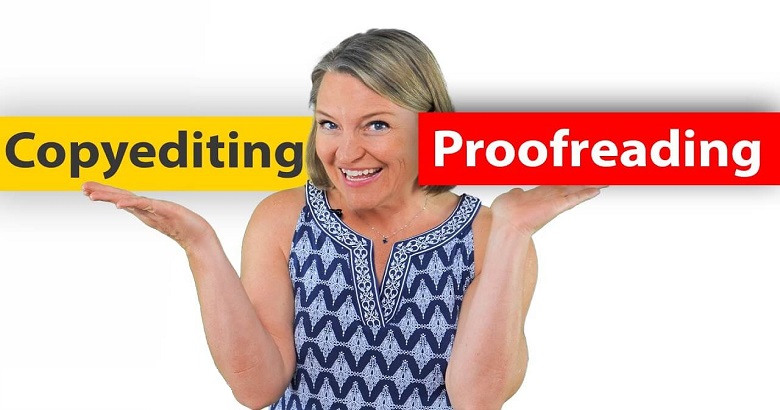In the world of writing and publishing, clarity and precision are paramount. Whether you’re an author, a student, or a business professional, ensuring that your text is polished and error-free is essential. Two key processes in achieving this are copyediting and proofreading. While the terms are often used interchangeably, they refer to distinct stages in the editing process. Understanding the differences between copyediting and proofreading can enhance the quality of your writing and ensure your message is communicated effectively.
What is Copyediting?
Copyediting is the process of reviewing and revising written material to improve clarity, flow, and overall quality. This stage occurs after the initial draft has been completed but before the final proof. Copyediting encompasses several key tasks, including:
1. Content and Structure Review
A copyeditor assesses the content for coherence and logical flow. They may suggest reordering paragraphs, restructuring sections, or even adding or removing content to enhance the narrative or argument. This stage is crucial for ensuring that the piece communicates its message effectively.
2. Grammar and Style Checks
Copyediting involves a thorough review of grammar, punctuation, and syntax. Editors check for common errors, such as subject-verb agreement, sentence fragments, and run-on sentences. Additionally, they ensure that the writing adheres to a specific style guide, whether it’s APA, MLA, Chicago, or a custom style guide set by the client.
3. Consistency and Formatting
Consistency is key in any written work. Copyeditors ensure that terminology, capitalization, and formatting are uniform throughout the document. This may include checking headings, bullet points, font sizes, and spacing to comply with established guidelines.
4. Fact-Checking
While not always included, copyediting can also involve fact-checking to verify the accuracy of information presented in the text. This is particularly important in academic writing, journalism, and non-fiction.
5. Tone and Voice Adjustments
A copyeditor considers the intended audience and purpose of the text, making adjustments to tone and voice as necessary. They aim to ensure that the writing is appropriate for its intended readership, whether it’s formal, conversational, instructional, or persuasive.
6. Clarity and Conciseness
Good writing is clear and concise. Copyeditors help eliminate unnecessary jargon, repetitive phrases, and overly complex sentences. Their goal is to make the text easy to read and understand.
Overall, copyediting is a comprehensive and detailed process that addresses the content, style, and structure of a document. It aims to ensure that the writing is polished and publication-ready.
What is Proofreading?
Proofreading is the final step in the editing process, occurring after copyediting has been completed. Its primary focus is on identifying and correcting surface errors in the text. Key aspects of proofreading include:
1. Error Detection
Proofreading involves a meticulous review of the text to catch typographical errors, spelling mistakes, and punctuation errors. Proofreaders look for common mistakes such as misplaced commas, misspelled words, and formatting inconsistencies.
2. Final Checks for Consistency
While copyediting addresses consistency throughout the document, proofreading serves as a final check to ensure that all formatting, including fonts, headings, and bullet points, is consistent and matches the specifications.
3. Reading for Flow and Readability
Although proofreading is less about content and more about surface errors, a good proofreader will still assess the overall flow and readability of the text. They may suggest minor changes to improve clarity but will not engage in extensive rewrites.
4. Ensuring Compliance with Guidelines
Proofreaders ensure that the document adheres to any specific guidelines provided by the client or publisher. This includes formatting, citation styles, and layout considerations.
In summary, proofreading is a focused review that aims to ensure that the text is free of errors before it goes to print or is published online. It is the last line of defense against mistakes that could undermine the professionalism and credibility of the work.
Key Differences Between Copyediting and Proofreading
While both processes aim to enhance the quality of written material, they differ significantly in their focus, purpose, and the stage at which they occur in the writing process. Here are the primary distinctions:
When to Use Each Service
Understanding when to engage a copyeditor versus a proofreader can save you time and improve the quality of your writing. Here’s a simple guideline:
- Use Copyediting When:
- You have a complete draft that needs improvement in structure and clarity.
- You want to ensure that your writing adheres to a specific style guide.
- You’re looking for feedback on content, tone, and overall quality.
- Use Proofreading When:
- You have a nearly final document that requires a final polish.
- You need to catch minor errors before publication.
- You want to ensure consistency in formatting and style.
Finale Round
In the realm of writing and publishing, copyediting and proofreading are crucial processes that contribute to the clarity and professionalism of a text. While copyediting focuses on enhancing content, structure, and style, proofreading is concerned with catching surface errors and ensuring a polished final product. Understanding the differences between these two stages can help you choose the right service for your writing needs, ultimately leading to clearer, more effective communication.
Whether you are preparing a manuscript for submission, a report for work, or an important email, investing in both copyediting and proofreading can elevate your writing to new heights. By ensuring that your work is both well-structured and free of errors, you can present your ideas with confidence and professionalism.
Frequently Asked Questions
1. What are the main goals of copyediting?
The primary goals of copyediting are to enhance the clarity, coherence, and overall quality of a text. This includes refining the structure, checking grammar and punctuation, ensuring consistency in terminology and formatting, and making adjustments to improve the flow and tone of the writing for its intended audience.
2. Is proofreading necessary if I have already copyedited my work?
Yes, proofreading is still essential, even after copyediting. While copyediting focuses on deeper issues related to content and structure, proofreading specifically targets surface errors such as typos, spelling mistakes, and punctuation errors. Skipping this step can lead to oversight of minor issues that may undermine the professionalism of the final document.
3. How do I know when to hire a copyeditor or proofreader?
You should consider hiring a copyeditor when you have a complete draft that requires assistance with content, structure, or style improvements. In contrast, use a proofreader when your document is nearly finished and needs final checks for spelling, grammar, and formatting consistency before publication or printing.
4. Can I perform both tasks myself?
While it is possible to conduct both copyediting and proofreading on your own, it’s often beneficial to have a fresh set of eyes review your work. Professional editors bring expertise and experience that can help catch errors and provide insights that you might overlook, ensuring a higher quality final product.
5. How can I find a qualified copyeditor or proofreader?
To find a qualified copyeditor or proofreader, look for professionals with experience in your specific field or genre. Check their credentials, ask for samples of their work, and read reviews or testimonials from previous clients. Networking in writing or publishing communities can also lead to recommendations for reliable editors.



